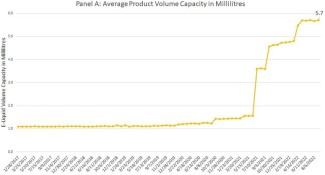Search
Risk Behavior Among Slovak and Czech Adolescents Through the Lens of Self-Regulation, Prosociality, and Antisociality
INTRODUCTION:
In the present article, we focused on the relationship between risk behaviour in adolescents, self-regulation, pro-sociality and anti-sociality. We work under the assumption that the development of the ability to self...
Addictions in Potential Sperm Donors: What is Possible to Control?
INTRODUCTION: Third-party sperm donation represents the sole viable option for conception for a considerable number of infertile couples. The donation process is predicated on ensuring the high quality and safety of the donated cells. While...
Development of Curricula and Sustainability of University-Based Master’s Programmes in Addiction Studies: A Pilot Comparative Study
INTRODUCTION:
Addiction studies programmes are very diverse around the world. To respond to the public health perspective needs to decrease problems related to drug use, empowering the addiction workforce in a sustainable way is a relevant...
Tobacco treatment billing and tobacco use disorder diagnosis in healthcare settings in the United States: an analysis of South Carolina medicaid claims
Background
Tobacco use is the leading cause of preventable death in the United States. Although Medicaid covers tobacco cessation treatments, smoking rates remain much higher among Medicaid beneficiaries (30%) compared to those with private...
Smoking and bladder cancer: insights into pathogenesis and public health implications from a bibliometric analysis (1999–2023)
Background
Cigarette smoking is a major risk factor for bladder cancer. Harmful substances in tobacco smoke can damage cells and lead to cancer. Understanding this link is important for better prevention and treatment.
Objective
This study...
The role of UK alcohol and drug (AOD) nurses in a changing workforce
Background:
This article shares findings from a study that looked into how alcohol and other drugs (AOD) nurses in the UK view their current career opportunities and the challenges they face. It also explores how changes in health services...
Use of Health Services by Residents at a Seniors-only Living Facility
The objective of the study was to compare the use of medical and dental services by seniors residing at a seniors-only living facility and in the general community. It was a quantitative study, among 50 residents of the living facility and...
Addiction Nursing Competencies A Comprehensive Toolkit for the Addictions Nurse
With the increased role of nurses in caring for patients with substance addiction, there was a clear need to develop the Addiction Nursing Competencies to guide and support the nursing workforce. A literature search revealed a lack of...
The burden and risks of emerging complications of diabetes mellitus
Abstract:
While the traditional complications of diabetes mellitus—such as cardiovascular disease—are well recognized, advances in treatment and increased life expectancy have revealed a new set of lesser-known complications that are...
Low Awareness of Diabetes as a Major Risk Factor for Cardiovascular Disease in Middle- and High-Income Countries
Objective:
Understanding that diabetes is a major risk factor for cardiovascular disease (CVD) may help increase diabetes screening and improve prevention efforts for CVD.
Overview:
The American Heart Association conducted an online survey...
Nursing and the Sustainable Development Goals: A Scoping Review
Purpose:
In 2015, all UN member states adopted the Sustainable Development Goals (SDGs) to promote global economic, social, and environmental progress. This scoping review explores how the nursing profession is connected to the SDGs and...
Lifelong learning and nurses’ continuing professional development, a metasynthesis of the literature
Background
Continuing Professional Development (CPD) is important for helping nurses keep their skills and knowledge up to date. While it’s well known that CPD is essential, we know less about how nurses feel about it and what challenges or...
Barriers and facilitators to scaling up medications for opioid use disorder in Kentucky: qualitative perspectives of treatment organisation staff
Background
Many people who could benefit from medications for opioid use disorder (MOUD) aren’t receiving them. This study looks at how MOUD agencies in Kentucky are experiencing changes in patient numbers and the challenges and supports...
Effectiveness of nurse-initiated smoking cessation intervention: a systematic review and meta-analysis
Background
Smoking is one of the top causes of preventable death and is linked to many serious health problems, including cancer and chronic diseases. Nurses can play a big role in helping people quit smoking by offering support through...
The repeatable battery for the assessment of neuropsychological status (RBANS) and substance use disorders: a systematic review
Background
Cognitive deficits are common in patients with substance use disorder (SUD) and can impact treatment outcomes. The Repeatable Battery for the Assessment of Neuropsychological Status (RBANS) is a widely used tool that could help...
Perceived impacts of North Americas first de-medicalised safer supply program
Background
A non-medicalized safer supply model called a “Compassion Club” has recently been evaluated. The model involved providing rigorously tested and accurately labeled illicit substances to members at cost. Operating for 14 months in...
Overcoming barriers to traditional care delivery and pharmacy challenges: a qualitative study of buprenorphine, telehealth, and a digital therapeutic for opioid use disorder
Background
The opioid epidemic in the U.S. contributes to increased morbidity and mortality from drug overdoses, but barriers to traditional opioid use disorder (OUD) treatment limit access to care. During the COVID-19 pandemic, Public...
Alcohol use disorder among people diagnosed with tuberculosis in a large urban case-finding project in central Uganda
Background
Heavy alcohol consumption increases the risk of developing tuberculosis (TB), delays diagnosis, and affects treatment adherence. This study aimed to examine the prevalence of alcohol use disorder (AUD) among individuals with TB...
Bigger, stronger and cheaper: growth in e-cigarette market driven by disposable devices with more e-liquid, higher nicotine concentration and declining prices
Abstract
Objective: This study explores trends in the disposable e-cigarette market in the USA, specifically focusing on changes in e-cigarette size, nicotine strength, and real sales-weighted average prices, both per e-cigarette unit and...
Share the Knowledge: ISSUP members can post in the Knowledge Share – Sign in or become a member







